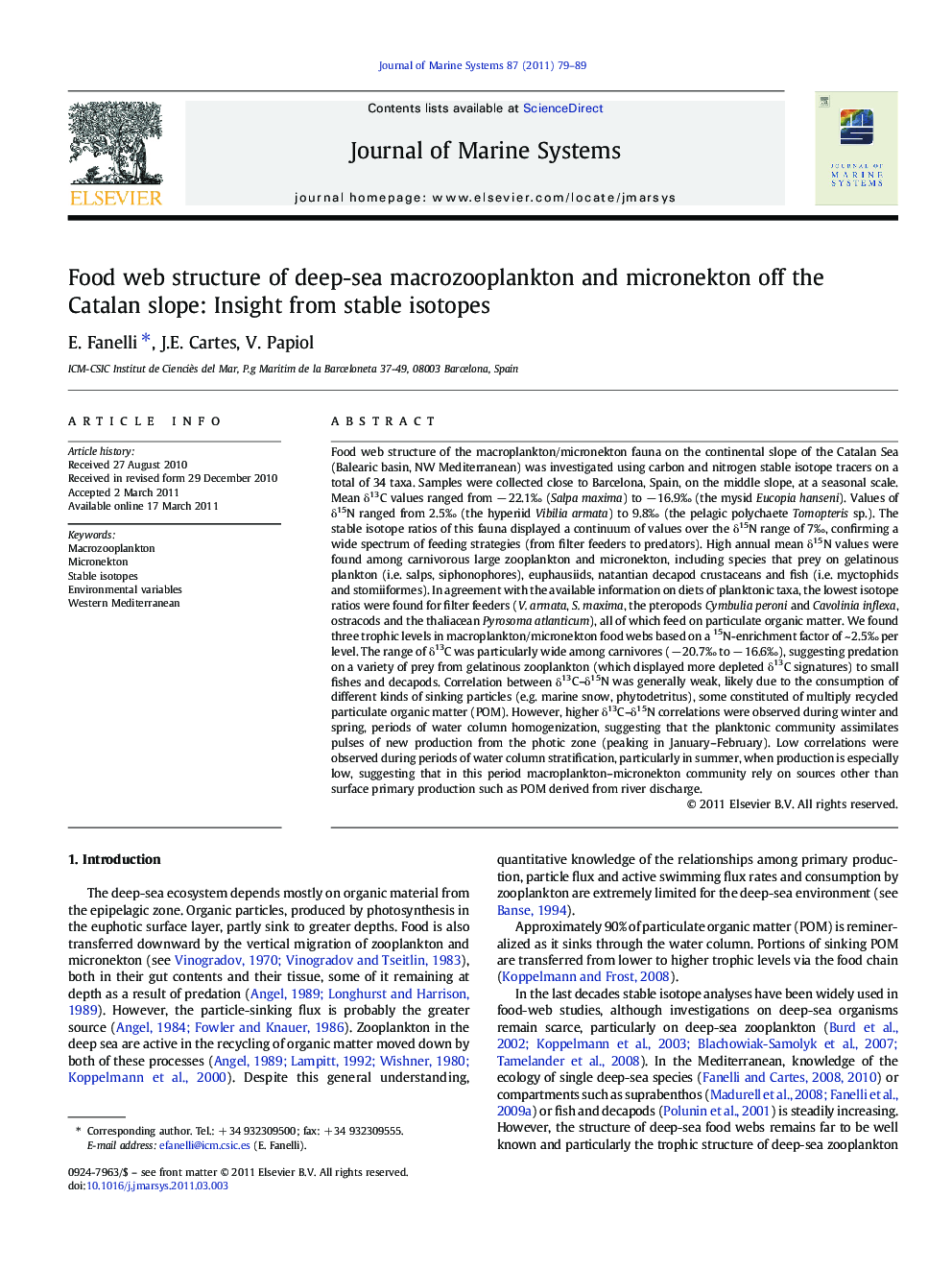| کد مقاله | کد نشریه | سال انتشار | مقاله انگلیسی | نسخه تمام متن |
|---|---|---|---|---|
| 4548363 | 1327898 | 2011 | 11 صفحه PDF | دانلود رایگان |

Food web structure of the macroplankton/micronekton fauna on the continental slope of the Catalan Sea (Balearic basin, NW Mediterranean) was investigated using carbon and nitrogen stable isotope tracers on a total of 34 taxa. Samples were collected close to Barcelona, Spain, on the middle slope, at a seasonal scale. Mean δ13C values ranged from − 22.1‰ (Salpa maxima) to − 16.9‰ (the mysid Eucopia hanseni). Values of δ15N ranged from 2.5‰ (the hyperiid Vibilia armata) to 9.8‰ (the pelagic polychaete Tomopteris sp.). The stable isotope ratios of this fauna displayed a continuum of values over the δ15N range of 7‰, confirming a wide spectrum of feeding strategies (from filter feeders to predators). High annual mean δ15N values were found among carnivorous large zooplankton and micronekton, including species that prey on gelatinous plankton (i.e. salps, siphonophores), euphausiids, natantian decapod crustaceans and fish (i.e. myctophids and stomiiformes). In agreement with the available information on diets of planktonic taxa, the lowest isotope ratios were found for filter feeders (V. armata, S. maxima, the pteropods Cymbulia peroni and Cavolinia inflexa, ostracods and the thaliacean Pyrosoma atlanticum), all of which feed on particulate organic matter. We found three trophic levels in macroplankton/micronekton food webs based on a 15N-enrichment factor of ~ 2.5‰ per level. The range of δ13C was particularly wide among carnivores (− 20.7‰ to − 16.6‰), suggesting predation on a variety of prey from gelatinous zooplankton (which displayed more depleted δ13C signatures) to small fishes and decapods. Correlation between δ13C–δ15N was generally weak, likely due to the consumption of different kinds of sinking particles (e.g. marine snow, phytodetritus), some constituted of multiply recycled particulate organic matter (POM). However, higher δ13C–δ15N correlations were observed during winter and spring, periods of water column homogenization, suggesting that the planktonic community assimilates pulses of new production from the photic zone (peaking in January–February). Low correlations were observed during periods of water column stratification, particularly in summer, when production is especially low, suggesting that in this period macroplankton–micronekton community rely on sources other than surface primary production such as POM derived from river discharge.
Research highlights
► The food web structure of deep macrozooplankton/micronekton is complex.
► The δ15N range shows several feeding strategies, from filter feeders to predators.
► δ13C–δ15N correlations were weak, due to the consumption of different particles.
► Marine snow, phytodetritus and POM from river discharge are the main carbon sources.
Journal: Journal of Marine Systems - Volume 87, Issue 1, July 2011, Pages 79–89